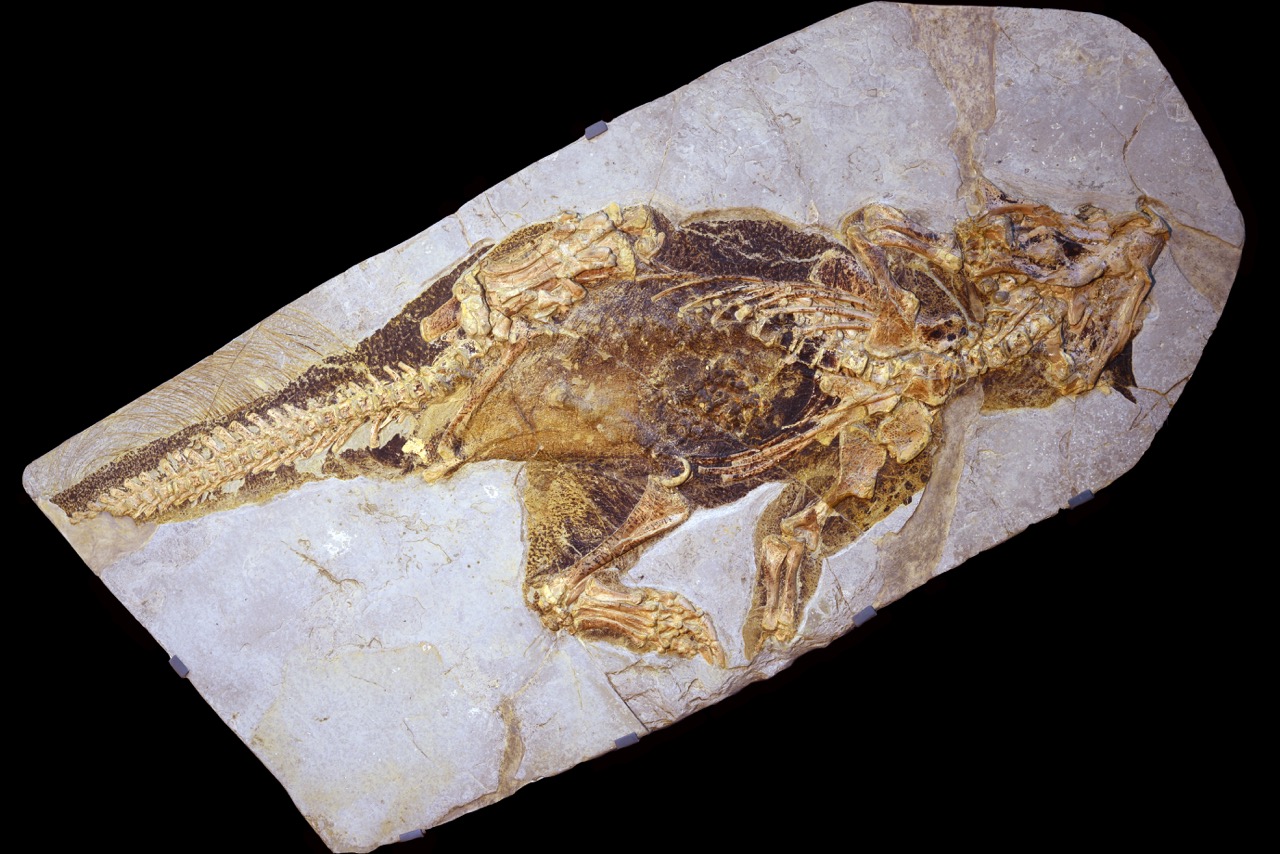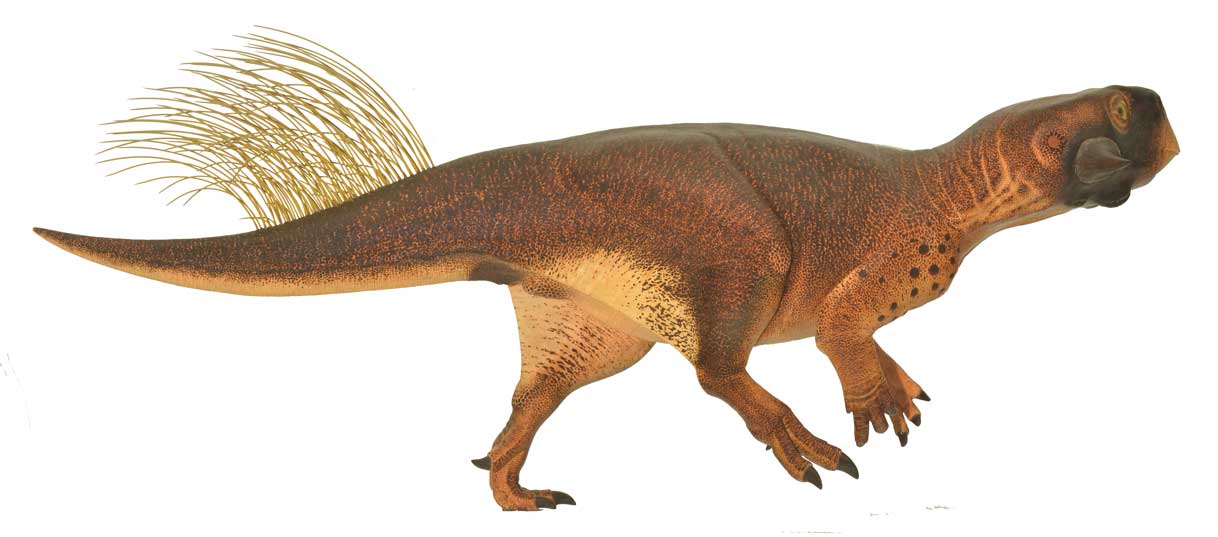Researchers from Bristol University have reconstructed the colour patterns of a Cretaceous-era Psittacosaurus, revealing not just its colours and distinct shading patterns, but also clues about the life and environment in which this extinct dinosaur lived.
A life-size, 3D model of Psittacosaurus. (Image: Jakob Vinther, University of Bristol and Bob Nicholls (Paleocreations.com))
In a new study published in Current Biology, Bristol paleontologists Jakob Vinther and Innes Cuthill show that the extinct Psittacosaurus (pronounced sit-a-ko-saurus), meaning parrot lizard, was light on its underside, while darker on top. Scientists refer to this colour pattern countershading, and it’s commonly seen in modern animals. The presence of this pattern suggests that Psittacosaurus lived in an environment with diffuse light, like a forest, and that it used its camouflage to hide from predators.
When light falls on a uniformly coloured object, it makes the top part appear lighter than the bottom. To a predator, that signals the presence of a discernible and solid object. But with countershading, this pattern is counterbalanced, making an object difficult to detect.
“Countershading works by counter illuminating cues to a three dimensional shape made by shadows on a body,” Vinther told Gizmodo. “By making those areas usually in shade lighter, an animal can make itself less conspicuous.”
This strategy is used by both terrestrial and marine animals, including deer and sharks. And as we now know from this latest research, dinosaurs used it as well.

Image: Jakob Vinther, University of Bristol
To prove that dinos used countershading, the researchers recruited the help of paleoartist Bob Nicholls to build a life-size 3D model of Psittacosaurus. This allowed them to see how the patterns of shading changed over its body, and how its appearance changed under various lighting conditions.
“Countershading varies with the lighting environment and we wanted to see under which conditions we would get shadows on this dinosaur that matched the countershading,” said Vinther. “We found that to be under closed lighting conditions, which you encounter in forests,” adding, “We were amazed to see how well these colour patterns actually worked to camouflage this little dinosaur.”
By working with the model, the researchers were able to conclude that Psittacosaurus — a small dinosaur with horns on either side of its head and long bristles on its tail — lived in a forest where the light was broken up by dense canopy. Evidence found in the same lake deposits where the dinosaur was found suggest there was a forest nearby, including petrified tree trunks, and conifer, gincko and cycad leaves. Traces of pollen suggest the forest was about 90 per cent coniferous.

Image: Jakob Vinther, University of Bristol
The researchers were able to discern the colours and shading of the dinosaur by analysing the fossil’s “melanosomes” — small structures that carry melanin pigments of the feathers and skin of many animals. By simply looking at these pigments on the fossil — and without the benefit of a microscope — the researchers could see that the belly and underside of the tail was lighter in pigmentation than the upper surface.
Looking ahead, the researchers would like to explore other types of camouflage in fossils, and use this evidence to better understand how predators perceive their environment.
